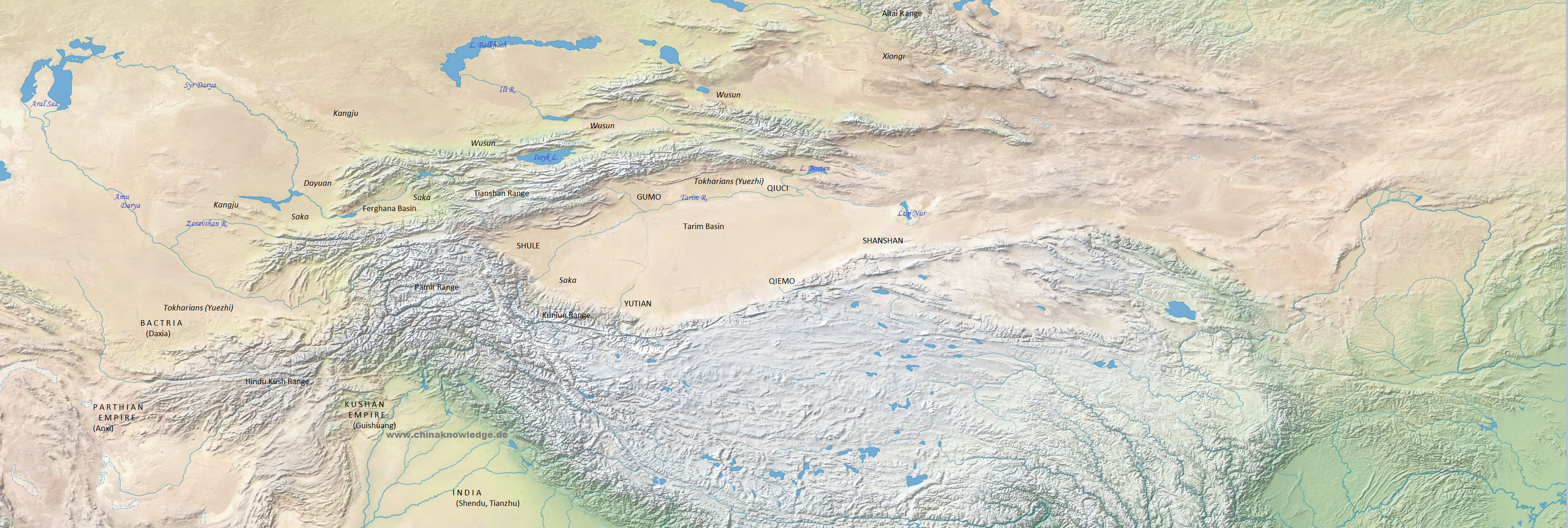Sai 塞 (also called Sairen 塞人 or Saizhong 塞種) is the Chinese term for the Indo-Iranian people of the Sakas. According to Chinese historiography, they originally lived in the western part of what is today the province of Gansu, around Dunhuang 敦煌.
Under the pressure of the Tokharians (by the Chinese called Yuezhi 月氏) they were forced to migrate more to the west and settled down in the region of modern Yining 伊寧, Xinjiang, in the northern parts of the Pamir Range. Part of them lived as pastoral nomads, but others worked the fields and engaged in the trades.
 |
Based on Tan Qixiang 譚其驤, ed. (1995), Zhongguo lishi ditu ji 中國歷史地圖集, Vol. 2, Qin, Xihan, Donghan shiqi 秦西漢東漢時期 (Beijing: Zhongguo ditu chubanshe, 1996). Tribes and peoples in italics, states in normal letters. |
The Sakas were famous for their mastery in copperwork. Around 200 BCE they were again forced to leave their homelands and migrated to the south, where they settled down in the countries of Jibin 罽賓 (Kashmir), Xiuxun 休循 or Juandu 捐毒. Yet a large part of the Sakas were integrated into the population of the Tokharian empire of the Yuezhi. When the Wusun 烏孫 conquered the northern part of the Tokharian empire during the 1st century BCE, the Sakas also became part of the new country of the Wusun.
During the 3rd century CE, after the demise of the Chinese Han empire 漢 (206 BCE-220 CE) and the disintegration of their protectorate of the Western Territories 西域, the Sakas mounted down the eastern flanks of the Pamir Range and settled down in the westernmost cities of the Tarim Basin, like Yutian 于闐 (Khotan), Pishan 皮山 or Shache 莎車 (the name of this state can be derived from *saγlâ, i.e. Saka).
The language of the Sakas belonged to the Iranian branch of the Indo-European languages. They might be identical to the people Greek historians called Scythians. They used the Kharoṣṭhī or Gandhari script (Chinese: Quluwen 佉盧文). Documents of Khotan are not only written in Khotanese (Tokharian), but also in the Saka language. Among the many documents discovered in Dunhuang are also some written in the Saka language, dating from the 10th and 11th centuries.